5 Days
FROM $2199
Stroll the snowy cobblestone streets of the only fortified city north of Mexico! Explore the European-like town, and enjoy the charming and relaxing atmosphere in winter. Available January to March.
Snowshoeing is a form of physical activity that traditionally uses two wooden-frame “shoes,” each strung together with woven rawhide webbing, to walk or run over snow. Originally a mode of transportation, snowshoeing is now also a popular winter pastime and competitive sport in Canada. No matter your reason for strapping on the shoes, it’s bound to help you work up a sweat and take you to gorgeous, hidden locations.

Snowshoes are designed to disperse your weight over a larger area, so you can stay hovering overtop of deep snow. It makes trekking through the wilderness easier and faster, meaning the course of your adventure is full of exciting options!
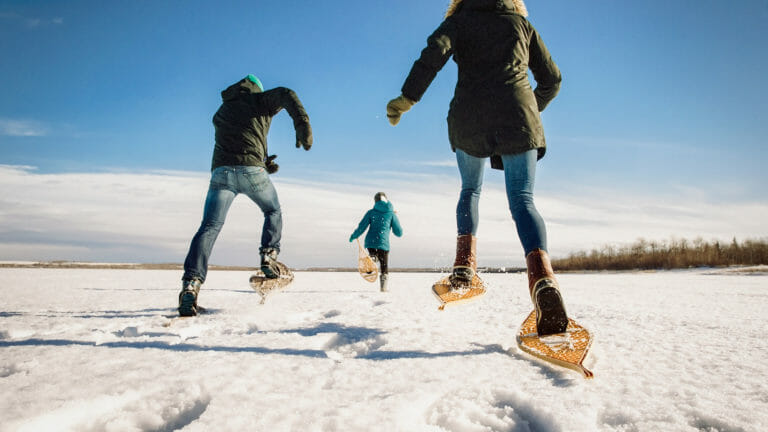
Snowshoes may prevent you from sinking in deep snow, but this sport is still an excellent cardio activity. It’s accessible to all ages and skill levels, which makes for a fun solo, family, or group excursion. Once you get the hang of the basic techniques, you can stick to the popular trails or venture out somewhere new…
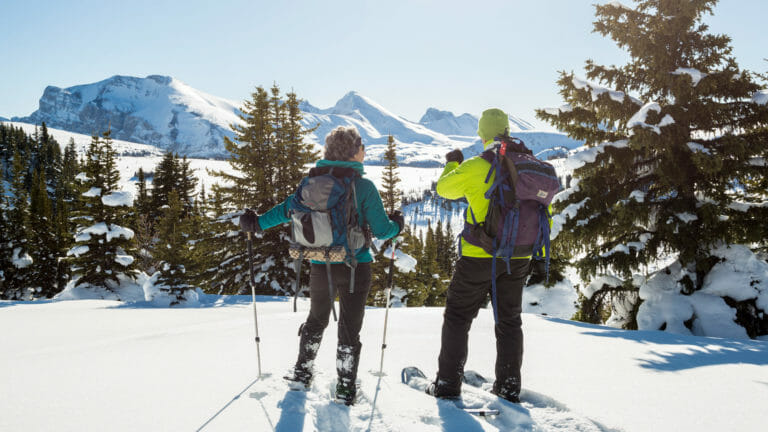
This sport can take you to remote places you might not otherwise be able to access. The views and solitude you’ll find are well worth the effort. You can even snowshoe at night, guided by the moonlight (or a trusty headlamp).
Let’s make a trip that’s uniquely yours! You decide how long, how many locations, number of inclusions, everything. Start planning now and make your dream trip a reality.
ADVENTURE
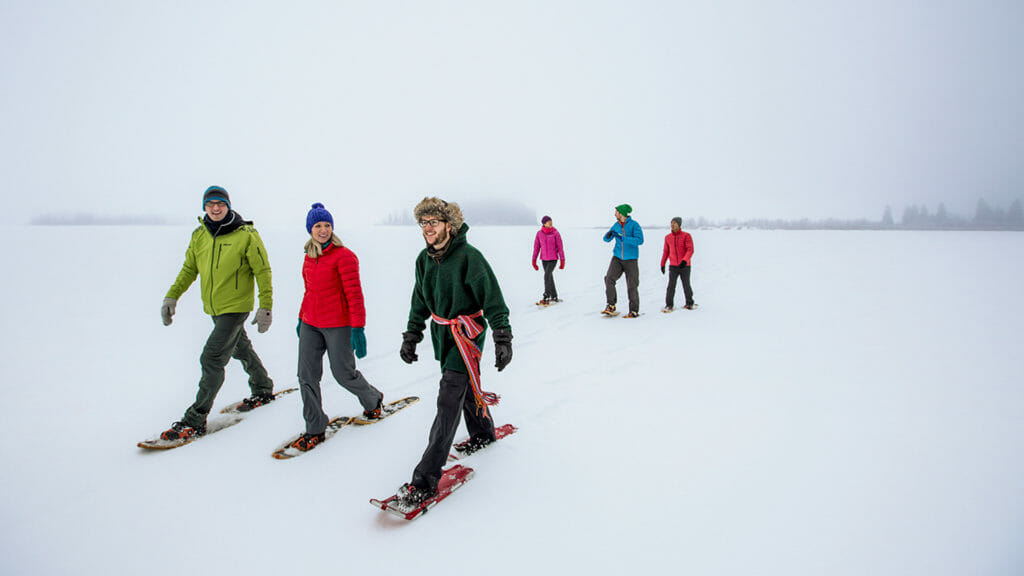
Snowshoeing helps improve your cardiovascular health, build muscles, and lessen impact on your joints, all at the same time!
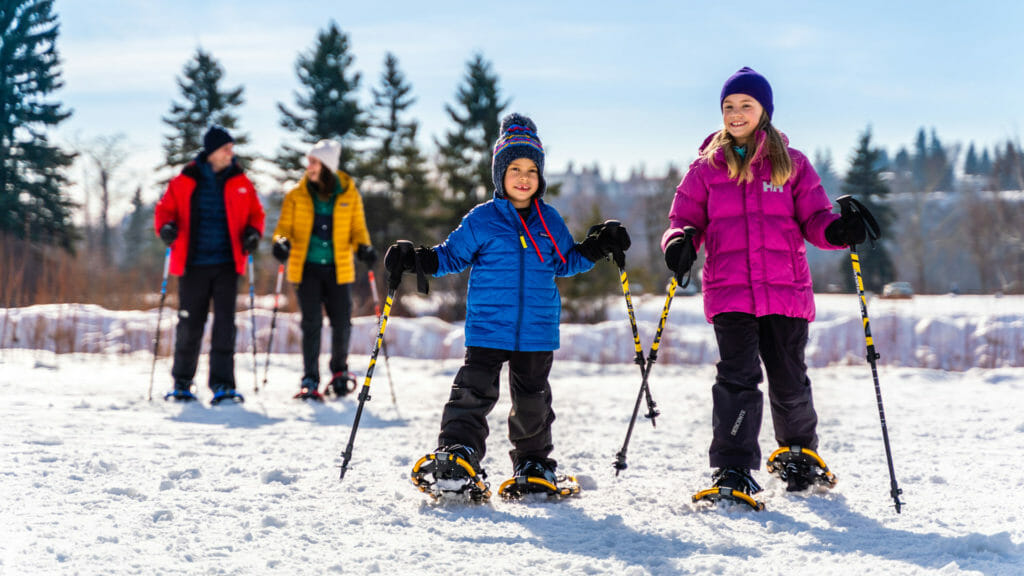
A quick crash course in snowshoe technique should have you ready to go, at least for the well-travelled trails.

Whether you prefer to meditate in nature on a calming solo trip or bond and socialize with others as you make your way, snowshoeing offers opportunities to soak up the winter sun and improve your mental health.
Whether you rent or own, make sure your snowshoes are right for the terrain and snow conditions, as well as your weight. You’ll also need warm, waterproof boots, layers of clothing (including a base layer that will wick sweat from the body), and those wilderness survival essentials (first aid kit, navigation, food, water, knife, fire starter, communication, and a backpack). Adjustable poles are also an option, especially if you want an upper body workout as well!
Anytime you decide to go explore nature, you should…
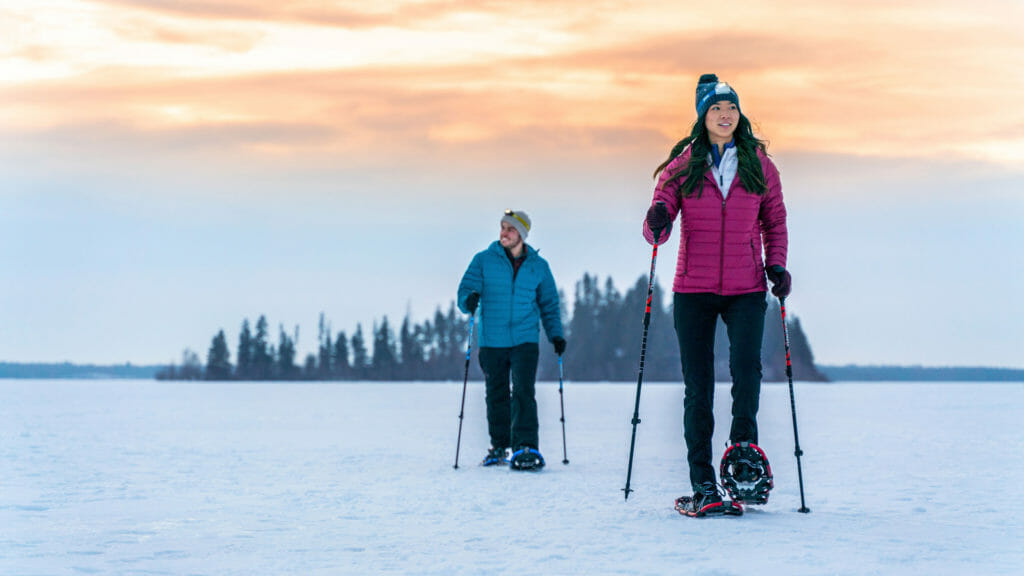
Don’t forget to follow snowshoeing etiquette:
When snowshoeing in the mountains, it’s a good idea to bring avalanche safety gear, including a beacon, probe, and retractable shovel.
Ancient peoples from Central Asia invented snowshoes 4,000 to 6,000 years ago, and they used them to traverse the land bridge to North America. Indigenous peoples in North America created the webbed snowshoe as we know it now, and modified it based on the unique winter travel needs of their geographic location.

Sometimes it’s just easier to talk to someone. Give us a call and let’s discuss how we can create your unique experience.
Copyright © 2024 Live It Up Lifestyle Adventures LTD. All rights reserved.